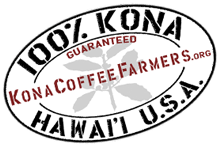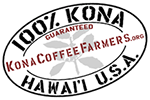KCFA Comments and Suggestions on UH-CTAHR’s 2016 CBB Recommendations
From Mike McMullen:
Page 1.
The first page of the document should be written as an executive summary. It should have an introductory paragraph and then include the specific recommendations to farmers. Page 1 should be able to stand alone and be detached and distributed. Department chairs, deans, USDA administrators, legislators, lobbyists, I dare say most farmers, want a one-pager to read and distribute. The rest of article expands and documents the recommendations. Anything that does not address the recommendations should be deleted.
Move the list of groups to the end of document just before references.
As I read the document the specific recommendations are:
- Farmers should insure field sanitation at all stages of coffee production. We specifically recommend strip-picking at least once a year. We recommend harvesting at least every third week to reduce overripe, dropped cherry and reduce time for borer emergence.
- We strongly recommend use of the “Revised Thirty Tree Sampling Method for monitoring CBB population dynamics.
- We recommend spraying with one of the Beauveria products any time the thirty tree sampling indicates from 2-20% of cherry with borer in AB (exposed) positions.
A list like this should be the meat of page 1.
Page 3.
“They are the MOST IMPORTANT CBB control activities”, statements like this need to be documented with, a reference, a citation to personal communication, or personal observations by the authors. Can’t just throw it out there.
Page 4.
“sanitation is by far the …method.” Delete, is redundant and not relevant to monitoring section.
Page 5.
Replace “plus” with “diluted with” and make into single bullet point.
“Optional” Are these being recommended or not? In a lot places in the document you throw out extras like this. This is a recommendations document. The reader needs to know what is recommended, what is not recommended, say “recommended” or “not recommended” or remove as just clutter.
Page 6. Are you recommending use of flat bark beetles?
Page 7. “a harvest interval of 2-3 weeks is ideal for CBB control” I think you mean We recommend a harvest interval of no more than 3 weeks. ‘ideal” would imply the 2-3 weeks is better than weekly, which I don’t think you mean.
Page 8. Change the second bullet to read “Dry parchment to less than 10.8% moisture.”
In disclaimers change “material” to “document” and “work” to “research”
Page 14.
Remove sentence “If you sample ….. container”. All depends on CBB levels.
Page 16.
Table 1 is way too complex to be useful to your target audience. I think you need a simpler way to present data that says if 2-20% AB then should spray.
Page 17.
My reading is you are NOT recommending traps so a simple sentence in monitoring is sufficient and delete Appendix C.
Page 19.
Same as above, are you recommending use of any of these products? If so, under what conditions? If not remove Appendix D.
From Bruce Corker:
2016 CBB IPM RECOMMENDATIONS—COMMENTS AND SUGGESTIONS
1—Farmer Input—A more useful and effective farmer focus would have resulted if an earlier draft of the document had been provided to KCFA coffee farmers for review and comment—rather than an 11th hour endorsement request for what appears to be the final draft.
2—Cost/Benefit—It is disappointing that the document’s introduction takes the following position: “The document does not include an economic analysis of the recommendations. Producers should decide the most cost effective methods for their farm with available information and business/financial records.”
Farming is a business and the most important issue for farmers with respect to the recommendations is—“Is this recommendation cost effective?” If a recommendation is not cost effective, it does not make economic sense to follow it. To suggest that it is individual farmers are the ones, for example, to carry out controlled studies and analyses and determinations of cost benefits is indefensible. UH and PBARC have received 7 figure funding from USDA grants to develop practical and economically feasible recommendations for farmers to mitigate the effects of CBB. To encourage farmers to follow recommendations without providing cost/benefit analysis is puzzling.
3—Citation of Supporting Data—For farmers to have confidence in the recommendations, the document should include citation to the studies and data on which each recommendation is made. The following are examples of recommendations for which supporting scientific data is not cited.
–Field Sanitation: On page 3 the document states: “[Field sanitation and strip-picking] are the MOST IMPORTANT CBB control activities.” On page 4 there is a statement that “sanitation is by far the most important control method.” What is the scientific data on which these statements are based? Is there data indicating that field sanitation and strip-picking are more effective at mitigating CBB than application of Bb? If so, what is that data?
–Bb Application Rates: The document recommends application of 32 ounces of Botanigard per acre. What is the scientific data on which this recommendation is based? The 2013 CTAHR original recommendation was for 7 ounces per acre. What was the scientific data for that 7 ounce recommendation and what was the basis for increasing that recommendation by more than 4 times? In a presentation in Kona a Bb distributor’s representative stated that the common application rate in Colombia is 16 ounces per acre. For practical economic reasons, farmers want to know what scientific data shows to be the most cost effective application rate.
–How Often to Spray: In 2014 PBARC scientist Lisa Keith told attendees at a KCFA meeting that studies she had conducted found that there was no significant difference in infestation from spraying Bb once a month as compared with spraying every 2 weeks. She was asked whether studies had been done on spraying at longer intervals (for example, every 6 weeks) and she said that such studies had not yet been done, but that they would be. Have PBARC or UH scientists developed data on the effectiveness of longer spraying intervals? Is there scientific data to support the document’s recommendation for spraying at least once a month? Does data show that once a month the most cost effective?
–Thirty Trees Sampling: The document recommends “Spray as often as sampling and monitoring [Thirty Trees] warrant or at least once a month.” Is there any scientific data indicating that adding the complicated and time consuming Thirty Trees sampling to a once a month spraying schedule is more cost effective than just spaying once a month?
–Pick Up Fallen Cherry/Raisins: The document recommends that pickers pick up fallen cherry and raisins from the ground. Is there any scientific data indicating that picking up fallen cherry and raisins from the ground significantly reduces infestation? Or that this practice is cost effective? Same questions for spraying the ground with Bb—p. 5.
4—Traps: It is surprising how much space continues to be devoted to traps and trapping procedures (pp. 4, 17-18) when the document states: (1) “[t]raps will not control or eradicate CBB”; and (2) that “[d]ozens of virtually identical beetles may be attracted to the traps’ and may “skew” the numbers. Early on, Eric Jiang of PBARC told us that it takes a scientist with a microscope to tell the difference between CBB and the many CBB lookalikes in traps. Is there data on how often farmers have applied extra sprays on the basis of lookalikes in traps? Is the continued inclusion of trap advice in the document a reflection of UH’s reluctance to acknowledge its mistake in vigorously encouraging Kona farmers to to invest time and money in traps in 2010 and 2011?
5–No CBB Quarantine of Green Beans to Oahu–The document at page 8 states that HAR 4-72 places a quarantine on the shipment of unroasted coffee from the Big Island to all other Hawaiian Islands. That is incorrect. Oahu has been designated as a CBB infested area. The quarantine regulations in HAR 4-72-12 do not prohibit shipment or require a permit for sending green coffee from one CBB infested area (Hawaii Island) to another CBB infested area (Oahu)

